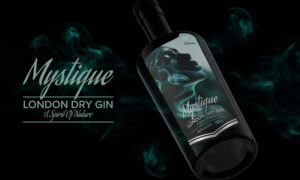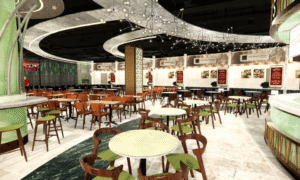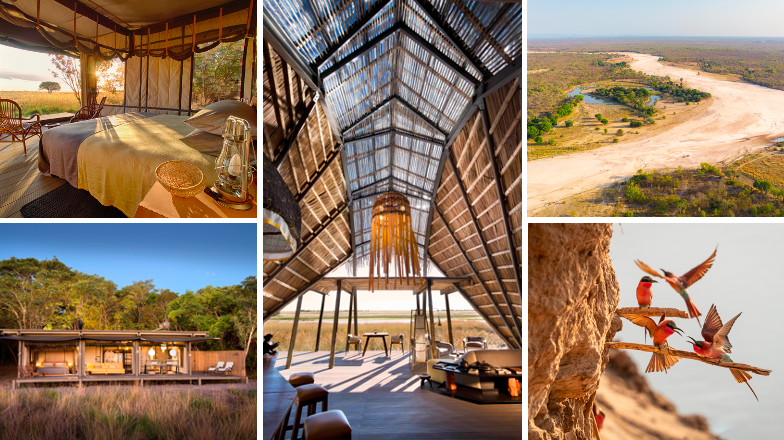 Time + Tide Safaris is a collection of nine properties in Zambia, created over 70 years by three generations of passionate conservationists: Norman Carr (in the 1950s), Chris Liebenberg and his father (in the 1990s) and finally Thierry Dalais, who in 2013 brought together all their camps under Time + Tide.
Time + Tide Safaris is a collection of nine properties in Zambia, created over 70 years by three generations of passionate conservationists: Norman Carr (in the 1950s), Chris Liebenberg and his father (in the 1990s) and finally Thierry Dalais, who in 2013 brought together all their camps under Time + Tide.
In the past eight years, Dalais has created a world-class collection, having invested heavily in the original camps and built the award-winning Chinzombo and King Lewanika camps, which today are considered the most luxurious in Zambia.
Situated in three of the country’s prime national parks – the South Luangwa, the Lower Zambezi and Liuwa Plain – the nine properties create a perfect circuit for the wildlife enthusiast, the adventurer and the keen photographer.
The three parks are remote and unspoilt, making the camps a perfect destination for the traveller who wants to escape into the wild, have adventures and connect with nature and new cultures without compromising on comfort.
Each is connected by regular domestic and chartered flights, offering rare access to three extraordinary African landscapes and more than a dozen activities, from kayaking safaris, tracking lessons and fireside cook-outs to remote sleep-outs under the stars.
PUTTING ZAMBIA ON THE MAP
Zambia is known by safari-lovers as one of the best countries on earth to see wildlife in pristine wilderness, without the crowds of East Africa or the high-prices of Botswana. Thanks to the foresight of the pioneering conservationist Norman Carr and Zambian chiefs who foresaw the benefits that well-managed wilderness could bring to their people, the peaceful, English-speaking country was one of the first in Africa to set aside land for wildlife.
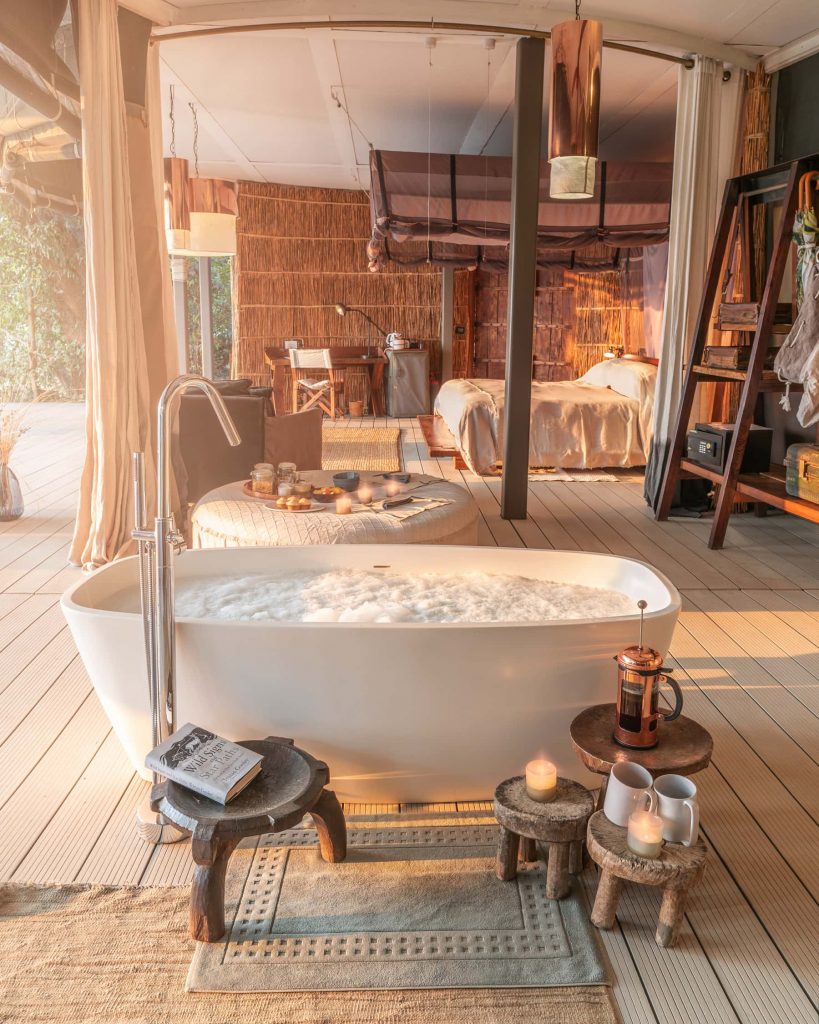 Today almost a third of the country – an area the size of the UK – is protected as a wildlife reserve or game management area, and its varied landscapes, from wide plains and vast rivers to ancient forests, are home to extraordinary range of creatures. As well as 450 species of birds, specialities range from leopard and wild dog in the South Luangwa and Africa’s second biggest migration of wildebeest in the Liuwa Plain to big elephant bulls and giant crocodiles in the Lower Zambezi.
Today almost a third of the country – an area the size of the UK – is protected as a wildlife reserve or game management area, and its varied landscapes, from wide plains and vast rivers to ancient forests, are home to extraordinary range of creatures. As well as 450 species of birds, specialities range from leopard and wild dog in the South Luangwa and Africa’s second biggest migration of wildebeest in the Liuwa Plain to big elephant bulls and giant crocodiles in the Lower Zambezi.
Thanks to Zambia’s world-class guide training, the male – and increasingly female – conservationists who lead safaris are extremely knowledgeable and are regular stars on wildlife programmes across the world. Many are the third-generation of their family to have guided in the area and can offer fascinating insights into not only into country’s wildlife but the 70 tribes who play such a key part in conservation in Zambia.
THE ACCOMMODATION
Time + Tide has more camps than any other safari company in Zambia, making it the country’s premier operator. The variety of styles appeals to wildlife lovers of various tastes and budgets, ranging from open-sided, pole-and-thatch bushcamps to a family-friendly safari house and two award-winning luxury camps designed by Silvio Rech and Lesley Carstens, the architects behind the barefoot luxury style of North Island and Mombo in Botswana.
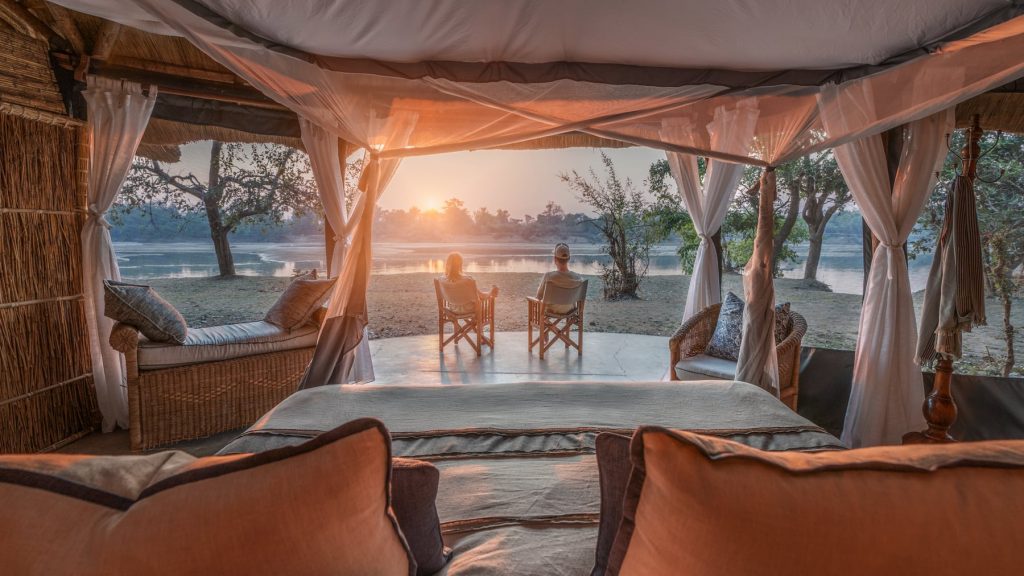 As a result, on a circuit, experiences can be extremely diverse: one night guests might be luxuriating in a candle-lit bath overlooking vast grassy plains at Liuwa Plains, the next watching shooting stars beneath a net on a sleep-out in a dry river-bed or listening to hippos harrumphing through wood-and-thatch walls.
As a result, on a circuit, experiences can be extremely diverse: one night guests might be luxuriating in a candle-lit bath overlooking vast grassy plains at Liuwa Plains, the next watching shooting stars beneath a net on a sleep-out in a dry river-bed or listening to hippos harrumphing through wood-and-thatch walls.
The properties are all in prime locations: in the South Luangwa, the sites of the camps were personally chosen by Norman Carr, beneath thickets of giant trees or on the prettiest banks of the Luangwa River; on the Zambezi, the Liebenberg family created Chongwe on a magnificent wide stretch of the river, at the confluence with the game-rich banks of the Chongwe River, and at Liuwa Plain, Dalais’ latest architectural camp is on the original site of the African Parks headquarters, at the heart of the migration.
In each of the camps, which range from sustainable, pole-and-thatch eco-bushcamps to architect-designed luxury safari villas, the accommodation is impeccable, with good beds, fine linens, hot showers and spacious living areas decorated with furniture and crafts made by local artisans. All have been designed to connect guests to the outdoors – as Dalais says “to root guests, link them to the soil and the trees and the stars around, so they feel part of the extraordinary nature that envelops them”.
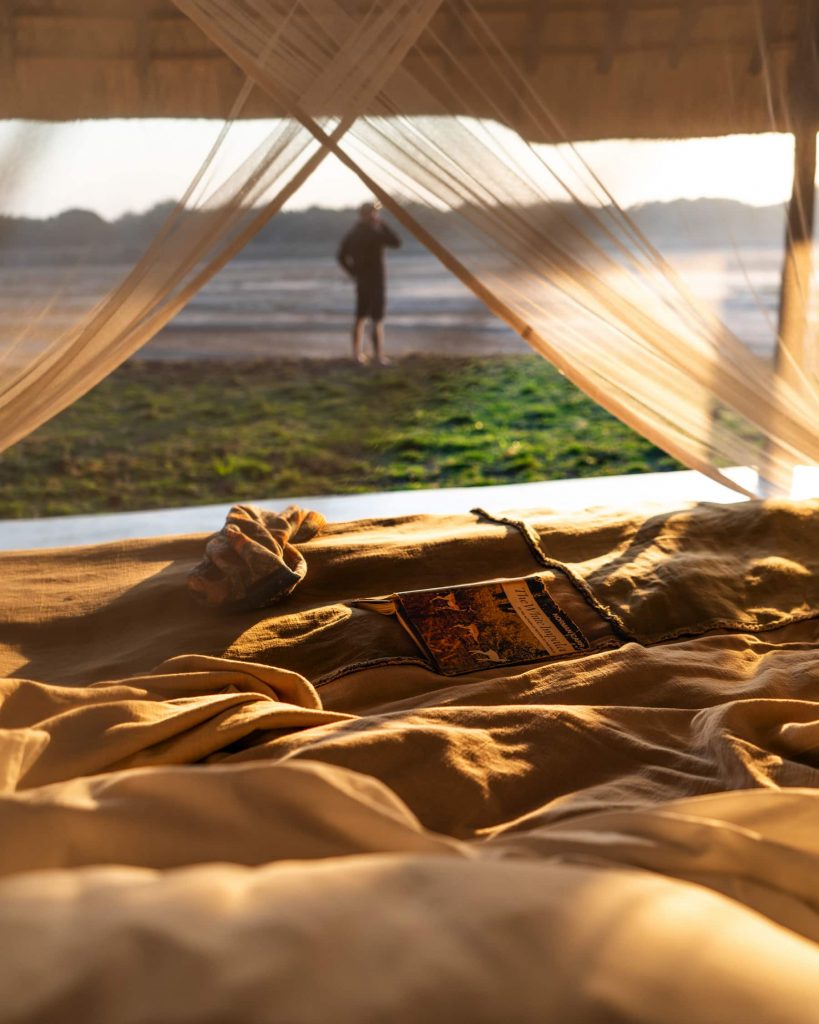 Each camp has a firepit at its heart, beside which guests can coffee in the morning, have cold sundowners in the evening, and relax at night, enjoying fresh, Zambian-sourced food – home-made breads, inventive herb-filled salads, fire-grilled fish and meats, and decadent desserts, accompanied by fine wines, cocktails and locally-brewed beers – while listening the sounds of the bush and the sparkle of unpolluted skies above.
Each camp has a firepit at its heart, beside which guests can coffee in the morning, have cold sundowners in the evening, and relax at night, enjoying fresh, Zambian-sourced food – home-made breads, inventive herb-filled salads, fire-grilled fish and meats, and decadent desserts, accompanied by fine wines, cocktails and locally-brewed beers – while listening the sounds of the bush and the sparkle of unpolluted skies above.
With a maximum of six rooms, each of the properties is intimate and the service personal: ideal for couples wanting a romantic getaway, a family holiday or a group of friends.
INTRODUCING TIME + TIDE’S NINE ZAMBIAN PROPERTIES
SOUTH LUANGWA NATIONAL PARK
CHINZOMBO
Zambia’s premier, ultra-luxurious camp: a sensational contemporary creation by the South African design stars Les Carstens and Silvio Rech on a wide and beautiful stretch of the Luangwa River, overlooking big hippo pools and grasslands frequented by game.
It is a design-lover’s dream: each of the six stylish, contemporary villas (one two-bedroomed) featuring enormous pared-back, open-sided living spaces, a private indoor egg-shaped bathtub and outdoor pool, and elegant artisan pieces hand-crafted from pale woods, buttery leathers, raw linens and delicately woven strands of reed.
The communal living area features a spacious library, cool lap pool, convivial bar and sunken fire-pit beside the river; spa treatments, using local oils, are available in guest’s rooms.
From US$1,150pp
TIME + TIDE’S FOUR BUSHCAMPS
Still sited in the same places in which Norman Carr built them in the South Luangwa National Park, Nsolo, Luwi, Mchenja and Kakuli bushcamps are set either in ancient thickets of trees alongside the Luangwa River, or overlooking pretty open areas through which game regularly passes.
Made from natural materials such as wood, straw and reed, each of the beautifully designed bushcamps is seasonal and rebuilt every year, to reduce its footprint on the environment. With rooms partially open to the elements, and sun- and star-lit bathrooms, these are camps that blend into the wilderness around: places in which lions might prowl in the moonlight or elephants might crunch seedpods outside as you shower.
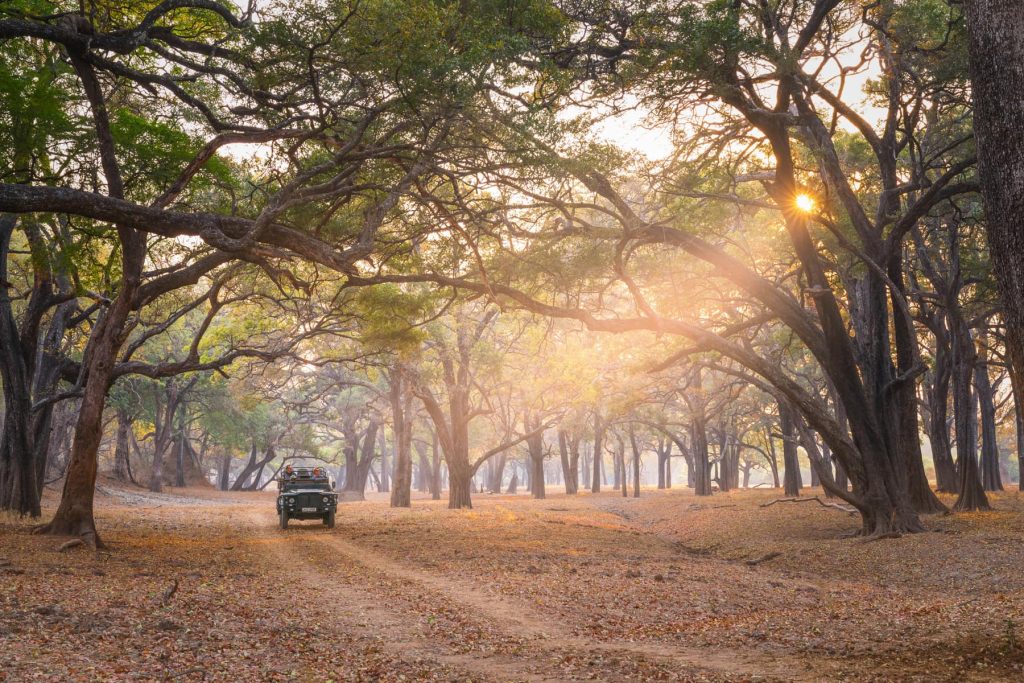 All four camps offer game drives, walking safaris and sleep-outs – beneath nets or in bush-hammocks. A walking safari between the properties allows guests to walk with a guide and armed ranger between two, three or all four camps, taking in the wildlife and landscapes en route, while their luggage is transferred by vehicle.
All four camps offer game drives, walking safaris and sleep-outs – beneath nets or in bush-hammocks. A walking safari between the properties allows guests to walk with a guide and armed ranger between two, three or all four camps, taking in the wildlife and landscapes en route, while their luggage is transferred by vehicle.
Each camp has its own specialty: Nsolo is known for dogs and bull elephants; Kakuli for boating and big cats; Luwi for its photographic hide overlooking a natural pool of water; and Mechenja for its swimming pool with views over an area elephants regularly come to drink.
From US$730pp; camps open seasonally.
THE LOWER ZAMBEZI NATIONAL PARK
CHONGWE
Set on the confluence of the Chongwe and the Zambezi Rivers, with the Great Escarpment in the background, and the Lower Zambezi National Park as a neighbour, Chongwe is sited on one of the most beautiful spots in Zambia. The wildlife here is prolific, from herds of giant-tusked elephants and black-maned lion to packs of wild dog and big pods of hippo. Activities range from walking and sleep-outs to kayaking and sunset boat tours.
Chongwe House – One of Africa’s most glamorous and unusual safari houses, with a private raised deck and pool and four open-sided, en-suite double bedrooms. With its sinuous, Gaudi-esque architecture, steep thatched roof and idiosyncratic stick-fringed terraces, the uniquely designed double-storey is a dreamy spot for a romantic retreat or digital detox, or a bush safari with family (and children over seven) or a group of friends.
The house has its own chef, guides and vehicles, so activities can be arranged when and where guests like.
From $3,260 for up to four guests.
Chongwe Suites – A luxurious pair of one and two-bedroomed terraced, canvas-walled safari suites, each with a private dip pool, open lamplit dining area and romantic, open-walled outdoor bathroom in which to soak and shower under the stars. Set just above the river’s edge, and overlooking a hippo pool, the suites – with mesh bedroom walls that can be rolled up in the day and zipped up at night – are a dreamy destination for a romantic couple, or a small family or a group of four who want their own staff and vehicles, and bespoke activities.
From US$815pp; closed Jan to March.
Chongwe Camp – A simple traditional tented bush camp, with nine thatch-shaded canvas tents set amid lawned gardens above the Zambezi River, renowned for its prolific game and spectacular sunsets. Days revolves around the campfire, communal dining table and tented bar, past which elephants often pass. Like the South Luangwa bushcamps, the tented rooms are simple, with open-roofed, reed-walled bathrooms.
From US$730pp; closed Jan to March.
LIUWA PLAIN NATIONAL PARK
Zambia’s answer to the Masaai Mara: than 3,660sq km of flat, often flower-strewn plains on which tens of thousands of wildebeest, zebra and oribi come to graze, beneath huge, dramatic skies. Time + Tide’s camp – the only one in the area – is where guests come to discover quietness, escape technology and learn about the cycle of nature. When the continent’s second biggest migration has passed by, hundreds of birds arrive, including pelicans, cranes and skimmers, as well as lechwe: the country’s handsome water-loving antelope.
KING LEWANIKA CAMP
The newest camp, named after the Barotse king who petitioned Queen Victoria to set the plains aside as a royal hunting ground in the 1880s, is Time + Tide’s most luxurious, modern and minimalist. Designed by the award-winning Carstens and Rech, its six contemporary one and two-bedroomed rooms, with masculine, clean-lined, industrial-style fittings and clean cotton, leather and canvas finishes, are open fronted and open sided so guests can enjoy the key attraction here: the views of the vast plains and skies.
Activities include bush picnics, jeep and walking safaris, kayaking during the flood season, and visiting the Lozi people, one of only two local tribes in Zambia still permitted to live – and spear-fish – in a national park.
From US$1,400pp; closed mid-July to mid-Oct.
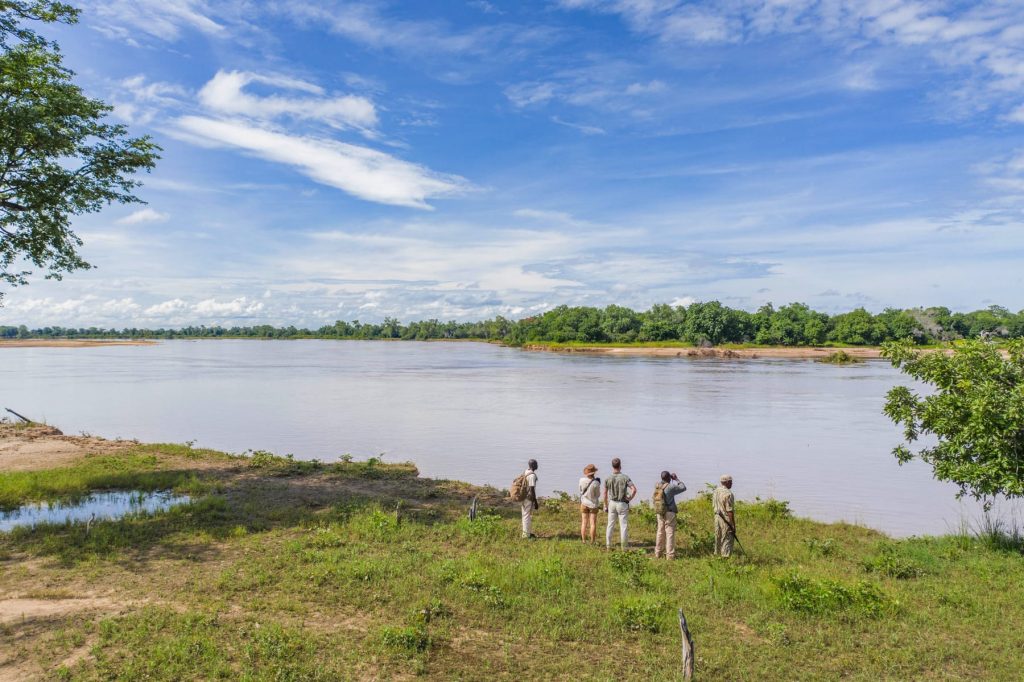 SUSTAINABILITY
SUSTAINABILITY
Many of Time + Tide’s camps have been sustainable for decades, having been built seasonally from local materials, and created to as low impact as possible. Today, 95% of fruit and veg for the camps is sourced locally.
Many of the staff own smallholdings and sell their produce to the company; all meat is sourced from local farmers and each camp features at least one traditional Zambian dish a day. Drinks are regionally produced: the wine from South Africa, beer from Zambia.
All bushcamps and King Lewanika are run entirely on solar power. Water is pumped using boreholes and is then filtered and purified.
All lamps are solar-powered. All waste is incinerated in camp, recycled or used as compost for local gardens. Glass is crushed and given to local charities to re-use in building and crafts.
Guests are given metal water bottles for their use during the stay. Chinzombo’s rooms are cooled using the eco-friendly Evening Breeze system.
THE TIME + TIDE FOUNDATION
Building on a legacy started by Norman Carr, today 5 per cent of every guest’s bed-night is donated to the Time + Tide Foundation.
With more than 40 full-time employees, the foundation helps to empower women in their businesses, educate girls, send promising high-school children to boarding schools, college and university, and to promote wildlife conservation in the areas around its camps.
In 2020, more than US$450,000 was raised by Time + Tide’s guests, as well as grants and private donors.

